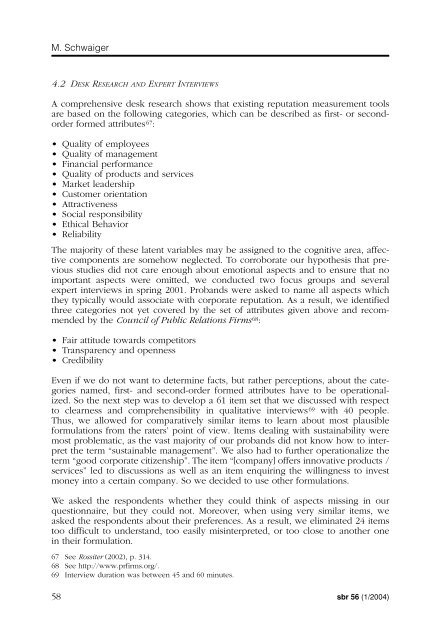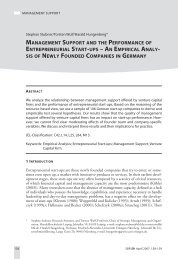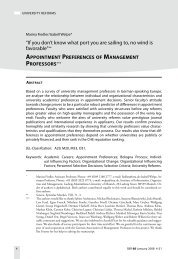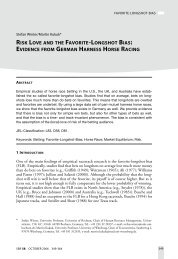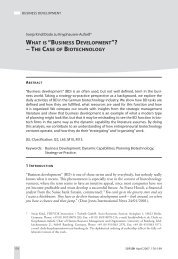components and parameters of corporate reputation - sbr ...
components and parameters of corporate reputation - sbr ...
components and parameters of corporate reputation - sbr ...
Create successful ePaper yourself
Turn your PDF publications into a flip-book with our unique Google optimized e-Paper software.
M. Schwaiger<br />
4.2 DESK RESEARCH AND EXPERT INTERVIEWS<br />
A comprehensive desk research shows that existing <strong>reputation</strong> measurement tools<br />
are based on the following categories, which can be described as first- or secondorder<br />
formed attributes 67:<br />
• Quality <strong>of</strong> employees<br />
• Quality <strong>of</strong> management<br />
• Financial performance<br />
• Quality <strong>of</strong> products <strong>and</strong> services<br />
• Market leadership<br />
• Customer orientation<br />
• Attractiveness<br />
• Social responsibility<br />
• Ethical Behavior<br />
• Reliability<br />
The majority <strong>of</strong> these latent variables may be assigned to the cognitive area, affective<br />
<strong>components</strong> are somehow neglected. To corroborate our hypothesis that previous<br />
studies did not care enough about emotional aspects <strong>and</strong> to ensure that no<br />
important aspects were omitted, we conducted two focus groups <strong>and</strong> several<br />
expert interviews in spring 2001. Prob<strong>and</strong>s were asked to name all aspects which<br />
they typically would associate with <strong>corporate</strong> <strong>reputation</strong>. As a result, we identified<br />
three categories not yet covered by the set <strong>of</strong> attributes given above <strong>and</strong> recommended<br />
by the Council <strong>of</strong> Public Relations Firms 68:<br />
• Fair attitude towards competitors<br />
• Transparency <strong>and</strong> openness<br />
• Credibility<br />
Even if we do not want to determine facts, but rather perceptions, about the categories<br />
named, first- <strong>and</strong> second-order formed attributes have to be operationalized.<br />
So the next step was to develop a 61 item set that we discussed with respect<br />
to clearness <strong>and</strong> comprehensibility in qualitative interviews 69 with 40 people.<br />
Thus, we allowed for comparatively similar items to learn about most plausible<br />
formulations from the raters’ point <strong>of</strong> view. Items dealing with sustainability were<br />
most problematic, as the vast majority <strong>of</strong> our prob<strong>and</strong>s did not know how to interpret<br />
the term “sustainable management”. We also had to further operationalize the<br />
term “good <strong>corporate</strong> citizenship”. The item “[company] <strong>of</strong>fers innovative products /<br />
services” led to discussions as well as an item enquiring the willingness to invest<br />
money into a certain company. So we decided to use other formulations.<br />
We asked the respondents whether they could think <strong>of</strong> aspects missing in our<br />
questionnaire, but they could not. Moreover, when using very similar items, we<br />
asked the respondents about their preferences. As a result, we eliminated 24 items<br />
too difficult to underst<strong>and</strong>, too easily misinterpreted, or too close to another one<br />
in their formulation.<br />
67 See Rossiter (2002), p. 314.<br />
68 See http://www.prfirms.org/.<br />
69 Interview duration was between 45 <strong>and</strong> 60 minutes.<br />
58 <strong>sbr</strong> 56 (1/2004)


